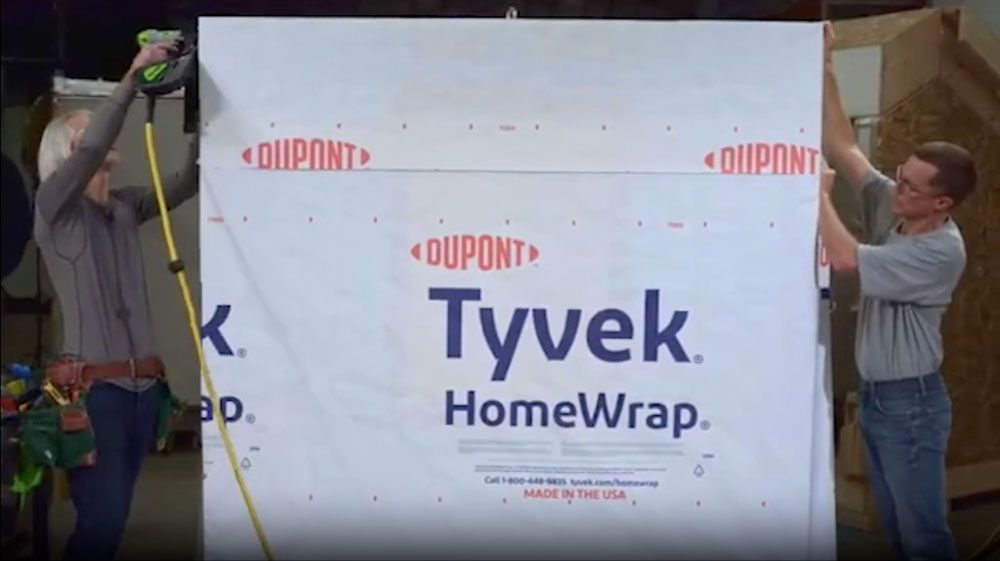An Optimized Approach to Building Integrated High-Performance Walls

For a house to be attractive to a buyer or renter, comfort reigns supreme. For builders, cost is usually often near the top of the list, whether that be in the form of energy expenses or the rising cost of materials. As sustainability initiatives continue to rise, the industry is moving toward various forms of “net zero” mandates in building codes, such as zero-energy, zero-carbon-ready, zero-emissions, etc. Builders today will need to be aware of which products they are installing in order to help achieve whichever mandates they are striving toward.
The building envelope has a major impact on all of these—cost, comfort, and code compliance. Take a closer look at the four control layers—water, air, thermal, and vapor—to see how you can afford year-round building performance regardless of the climate in which the home is located. This approach can offer comfortable interior temperatures, more durable structures, and more affordable energy bills. But what’s the most efficient way to achieve all of that?
Control Layers & R-Value
To a significant degree, we can determine this.
Water, air, thermal, and vapor: the four control layers of a building envelope. Once we ensure that bulk water management and minimizing air leakage are designed for, we can focus on the next most important layer that is critical for both comfort and energy performance: thermal.
The method of calculating how effective a home will be in terms of its thermal performance is described by its “R-value.” This R-value measurement describes the heat resistance of the wall assembly based on its components. It’s important to note that about one-fourths of a typical wall is comprised of wood, so only three-quarters of the home will have insulation, which is why continuous insulation products like DuPont™ Styrofoam™ Brand XPS Insulation are becoming standard.
In many cases for wood-framed homes, 1.5-inch continuous insulated foam sheathing is optimal, but this can vary depending on climate zone and performance requirements. Building science educators at Construction Instruction offer a calculator on its website that determines a building’s effective R-value based on the stud size, framing percentage, and exterior and cavity insulation R-values, so that you can design the right assembly for your job.
Control layer design is one part of the equation; they also need to be integrated properly in order to achieve optimum performance.
Sustainability Concerns
As builders drive toward net zero energy and zero carbon goals, the construction industry is moving toward better control layer effectiveness and consciousness in material selection.
Water & Air: DuPont™ Tyvek® Weatherization Systems include a full system of wrap options, tape, and flashing accessories, in addition to detailed installation instructions, to help ensure optimal building envelope performance. Tyvek® WRBs are durable and meant for long-term use to help reduce operational carbon through improved energy efficiency. Tyvek® WRBs are manufactured with a zero-landfill process.
Thermal: Styrofoam™ Brand ST-100 XPS provides excellent thermal resistance in roof assemblies, above & below grade walls, and under slabs. Its recently reformulated “ST-100” series of XPS insulation offers reduced embodied carbon profile without compromising performance.
Optimized Components
Materials that are designed to work as a system are more effective in the long run than selecting mismatched components. All the elements must integrate seamlessly in order toto create an optimal wall assembly.
DuPont Performance Building Solutions’ products are designed and tested to work together to address the complexities necessary for a holistic build, including water, air, and thermal barriers. That includes Tyvek® Weatherization Systems, Styrofoam™ Brand XPS insulation, flashing accessories, rainscreens and more. Using a suite of products specifically designed to work together allows a building to perform as desired.
A homeowner wants to be comfortable and secure without having to worry about sky-high energy bills, air quality, condensation, and water and air intrusion. That is the mission of the builder: creating homes that are healthy, durable, energy-efficient, and affordable to operate and maintain. The right products will enable you to do just that, making them more appealing and livable.
For more information and to view a demonstration of how to build these well-integrated systems, check out the webinar “Build High Performance Walls: How To Do It Right The First Time & Why.” This webinar also offers attendees the opportunity to claim 1 AIA Learning Unit (1LU) Elective Credit.
Keep learning. Keep building better.
Register for updates from the DuPont Performance Building Solutions EDU HUB and we'll keep you current on the latest building insights and training opportunities that will help you to do your best work for your customers.




